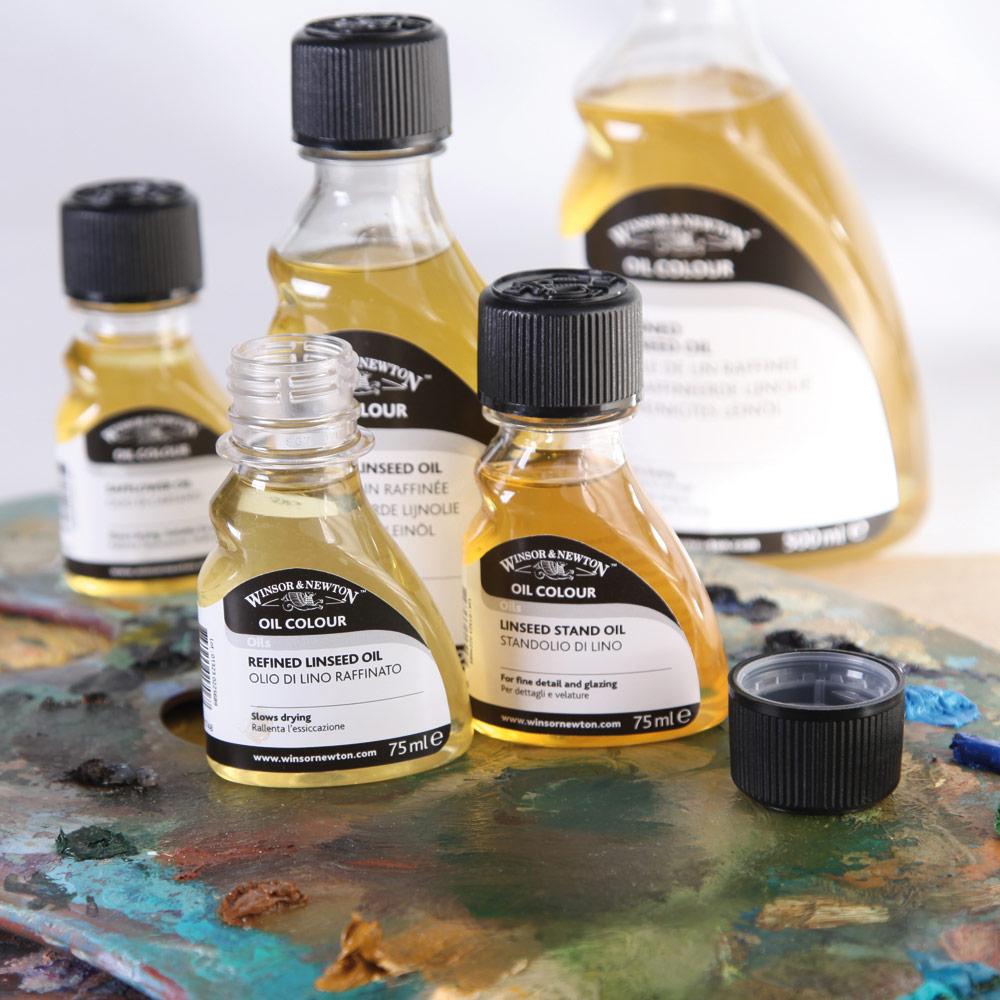Oil paints have been most artists’ first choice for hundreds of years, with good reason. The colours are gorgeous, you can do anything with them and they last forever. Newcomers to this medium tend to have questions about the drying time of oils, and often ask – does oil paint dry? Oil paints are slow drying, so you can remove what you don’t like while they’re wet or you can paint over them when they’re dry. They’re also easy to use once you learn the basics.
Michael Harding Oil Paints have a buttery consistency, are easy to handle and have high quality pigmentation. Learn more about them here.
Oil painting mediums are a bit of a mystery in comparison. What do they do, and what’s the difference between them all? This blog post will answer those questions and give you an overview of our most popular oil mediums to help you choose the right one for your artwork.
You can use an oil medium to adapt the consistency, drying time and finish of your painting. It’s easy to create a variety of different sheens and either extend or shorten the drying time of the paint, depending on which you use. You can mix mediums directly with the paint on your palette, or dip your brush into them as you would with water.
Most oil mediums are naturally tinted with a slightly yellow colour, which means you need to be cautious when mixing them with lighter colours. Over time they can give your paintings a yellow tint, so be mindful of how much you use when mixing with your paint.

Refined Linseed Oil
This is the most popular oil medium for fine art. When using linseed oil for oil painting, it slows down the drying time of your paint, which can be very useful when painting in layers. When using Refined Linseed Oil it’s good practice to paint your fast-drying layers first. Each layer on top should take longer to dry than the previous one, so you can apply more of this medium with each layer.
We recommend Winsor & Newton Refined Linseed Oil, which increases gloss & transparency, and softens the consistency of oil paint. A more economical alternative is Loxley Refined Linseed Oil, which comes in a 500ml bottle and will last you a long time. To speed up the drying time of your oil paints use Winsor & Newton Drying Linseed Oil.
Drying Poppy Oil
Winsor & Newton Drying Poppy Oil is a fast-drying pale oil made from poppy seeds which is well suited for whites and pale colours. It reduces consistency, increases gloss & transparency, and resists yellowing. It is classed as a semi-drying oil, which means it dries slower than Linseed Oil.
Liquin
Winsor & Newton Liquin Original can also reduce the drying time of your paints, by up to half. This makes Liquin an excellent Linseed Oil alternative. It also adds a silky consistency to your paint, giving the surface a glossy finish. It doesn’t affect the colours of your paint either, which is a fantastic bonus.
Use Winsor & Newton Liquin Impasto if you’re working with really thick paint applications. It can speed up the drying time of a heavy-loaded canvas and holds the texture beautifully. It will also give your colours a rich, glossy finish.
For finely detailed oil paintings try Winsor & Newton Liquin Fine Detail, which reduces the drying time of oil colours by 50%, leaving paint touch-dry in 1 to 6 days, depending on thickness. It should be noted that Liquin Fine Detail is not suitable for use as a varnish or final coat.
Turpentine
Although technically a solvent, turpentine is very popular with traditional oil painters. It speeds up drying time as it dilutes the paint and evaporates off of it, much like water does with acrylics. When painting in layers, you should use turpentine for your basecoat or first layer of paint, as you should always apply your fast-drying layers first.
Winsor & Newton Distilled Turpentine is fantastic for thinning your oil paint as well as cleaning your brushes. It’s a great multi-tasking tool and should be a staple of every oil painter’s studio.
Stand Oil
Winsor & Newton Stand Oil is very thick and has a consistency similar to honey. It slows drying, whilst providing a smooth enamel finish with no brush marks. It increases the durability of oil colour film, making it ideal for glazing and fine detail if mixed with solvent. It also levels out your brush strokes to leave a glossy sheen. Stand oil is another great alternative to Linseed Oil.
Mix Stand Oil with Turpentine to make your own slow-drying medium. A small quantity of Stand Oil mixed with Turpentine will dry quicker than when you use Linseed Oil on its own.
Painting Medium
Winsor & Newton Painting Medium smoothly blends areas, leaving no brush marks. It prevents colour yellowing and dries slowly to a flexible gloss film. This medium is particularly suitable for oiling out and enriching dull patches.
Interested in learning more about using oil paints? Take a look at these blogs.
Working with Oils
Mixing Oil Paints: Everything You Need To Know




















